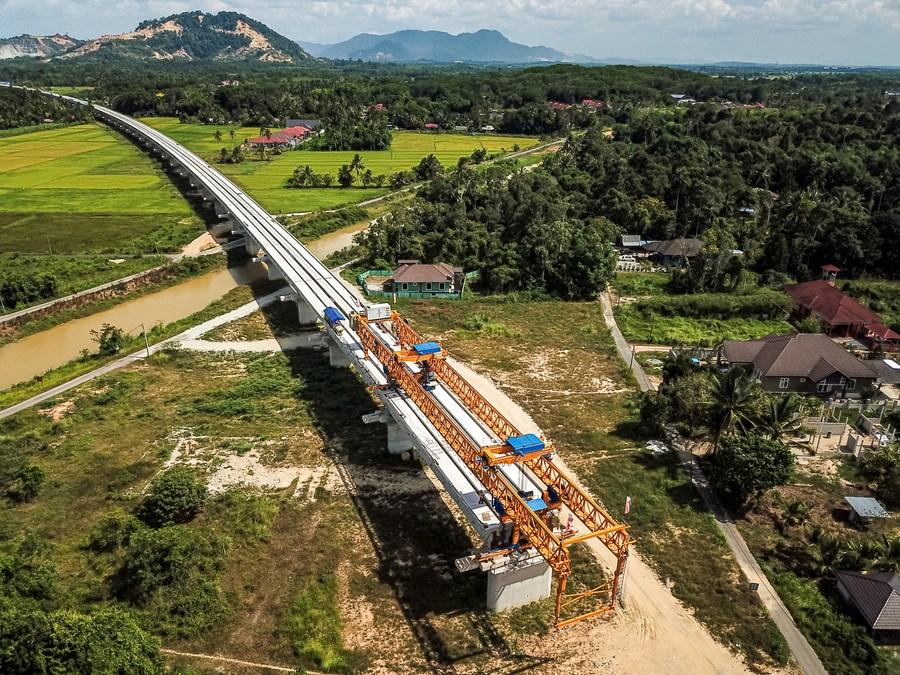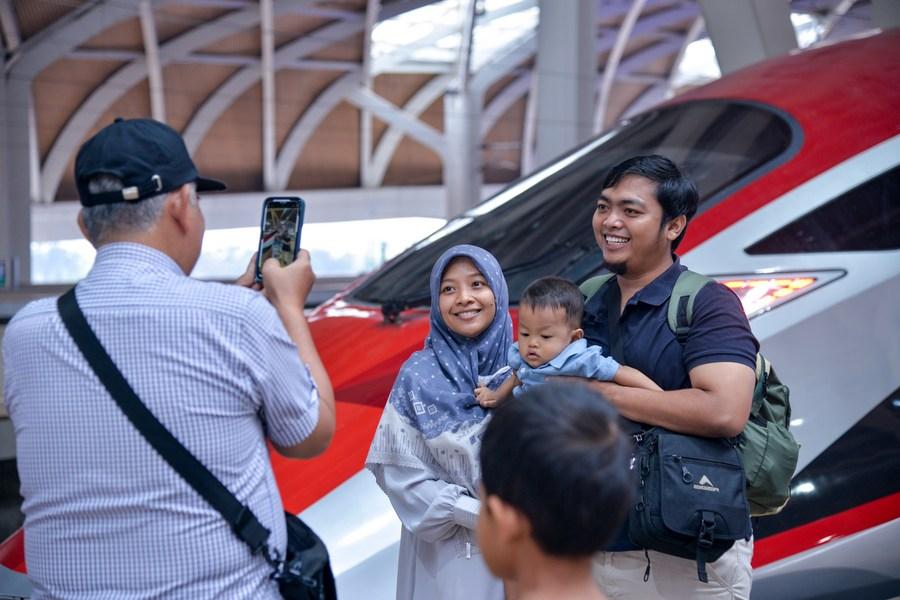Xinhua | November 29, 2023

This aerial photo taken on April 26, 2023 shows a construction site of the East Coast Rail Link (ECRL), a major infrastructure project under the Belt and Road Initiative (BRI) in Kelantan, Malaysia. (Xinhua/Zhu Wei)
China's Belt and Road Initiative (BRI) has marched forward a decade since its unveiling and has continued growing in scope and scale, bringing better connectivity for common development and prosperity, experts have said at an international forum in Kuala Lumpur.
In his opening remarks at the International Forum on New Inclusive Asia (IFNIA) 2023 on Monday, Ong Tee Keat, president of the Belt and Road Initiative Caucus for Asia Pacific sang high praise for the solid achievements made by the BRI over the past decade.
Since it was proposed in 2013, the BRI has grown to include over 3,000 projects in 152 countries and regions and is a game changer in transforming the economic competitiveness of its partnering countries, with a 2019 World Bank study reporting that the BRI is expected to add real income gains of between 1.2 and 3.4 percent for participating nations, Ong said.
The BRI transport projects could reduce travel times along economic corridors by 12 percent, increase trade between 2.7 percent and 9.7 percent, and lift 7.6 million people from extreme poverty, he said.

People pose for photos with a high-speed train of the Jakarta-Bandung High-Speed Railway at Halim Station in Jakarta, Indonesia, Nov. 5, 2023. The Jakarta-Bandung High-Speed Railway (HSR) is a flagship project that synergizes the China-proposed Belt and Road Initiative and Indonesia's Global Maritime Fulcrum strategy. (Xinhua/Xu Qin)
Lin Shiguang, minister-counselor of the Chinese Embassy in Malaysia, said in his speech that the BRI cooperation provides Chinese solutions for global prosperity, citing successful rail lines constructed in Laos and Indonesia and the ongoing construction of the East Coast Rail Link (ECRL) in Malaysia, which have improved connectivity and boosted economic activity.
"Let us advance modernization of all countries, build an open, inclusive and interconnected world for common development, and jointly build a community with a shared future for mankind," he said.
Meanwhile, Executive Dean of Faculty of Business and Law of Taylor's University in Malaysia, Chong Siong Choy believed that the BRI can be a platform for China and Malaysia to forge mutual development and strengthen educational and research collaboration in areas such as climate change, green energy, artificial intelligence, cybersecurity, food security and healthcare.
"There are vast opportunities for partnerships and collaboration between Malaysian and Chinese universities for mutual benefit of both countries and the world," he said.
More open communications about China and the benefits of the BRI are necessary for Malaysian youth to have the right perception of China and this global mega initiative that spans many countries, he said, noting that Chinese students accounted for 43 percent of all international applications to the country in 2022.

This aerial photo taken on Nov. 23, 2022 shows a Fuxing bullet train running on the Yuanjiang bridge of the China-Laos Railway in southwest China's Yunnan Province. (Xinhua/Hu Chao)
For his part, Mushahid Hussain Syed, a senator and chairman of the Pakistani Senate's Defense Committee, said in a video address that China is today the leading exponent of globalization, drawing on its long history of trade and networks dating back to the Silk Road.
China's global developmental and engagement efforts through the BRI in conjunction with its unprecedented peaceful rise have set it apart as an alternative development model, he said.
The forum provides a platform for scholars, researchers, experts and policymakers from BRI-participating countries to share their views, insights and perspectives on the achievements and challenges of the BRI and the way forward.

